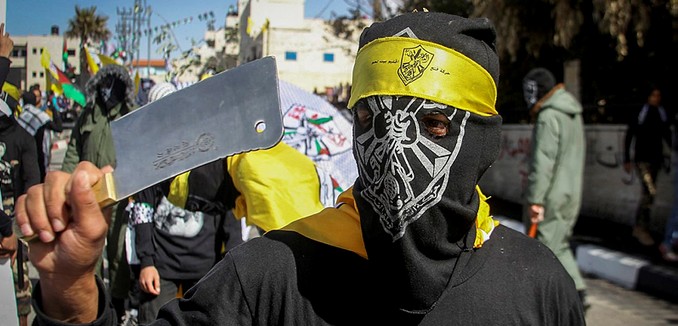An extensive study examining whether Palestinian society supports a two-state solution for peace with Israel was published Monday in Mosaic Magazine. Data was used from some 400 publicly available polls.
“Polls of Israelis and Palestinians show that there is still strong support for the two-state solution – in theory,” wrote Daniel Polisar, author of the study and executive vice-president of Shalem College. That said, “what matters for purposes of negotiations and policy-making is not what Palestinians say about a two-state solution in theory but what they think of the actual provisions of a potential deal. What concessions are they willing to make, what are their red lines, and how, after considering the tradeoffs, do they view the package as a whole?”
Polisar examined six elements that the Ramallah-based Palestinian Center for Policy and Survey Research (PCPSR) presented as the specifics for a potential two-state solution. These include (1) the territory that would make up a Palestinian state, (2) the division of Jerusalem, (3) the requirement that the state be demilitarized, (4) allowing Israel to maintain monitoring stations in Palestinian territory for 15 years, (5) a limited “right of return” for Palestinian refugees, and (6) a commitment to declaring an end to the conflict.
In 14 of the 16 polls, Palestinians rejected a two-state solution based on these terms by a margin of 54 percent to 44 percent. Furthermore, in the two most recent polls, conducted in December 2014 and December 2015, opposition to these particulars increased to an average of 61 percent. Polisar also noted that those strongly opposed to such a deal outnumbered those strongly supporting it every time—usually by an average of greater than 3 to 1.
Perhaps surprisingly, opposition to a two-state solution based on these terms was stronger in the West Bank than in the Gaza Strip by an average of eight points.
Polisar observed:
The depth of Palestinian opposition to a prospective deal becomes clearer when one examines responses to specific components. Not surprisingly, there was vehement antagonism to limitations on the Palestinian state’s sovereignty, with 70 percent or more consistently rejecting the idea of a demilitarized state and solid majorities, averaging 56 percent, rejecting the arrangement whereby Israel would maintain warning stations for fifteen years and have use of Palestinian air space for training.
More surprising, perhaps, is that on all sixteen occasions, Palestinians overwhelmingly repudiated the idea of East Jerusalem becoming the capital of their state and incorporating its Arab neighborhoods, including most of the Old City and al-Haram al-Sharif. (Presumably, the obstacle was that, in parallel, Israel would exercise sovereignty over the Jewish neighborhoods, the Jewish quarter of the Old City, and the Western Wall.) The level of opposition to this plank averaged 64 percent. Moreover, the full extent of hostility to the proposal was likely muffled since, while the question explicitly specified that East Jerusalem would be the capital of the Palestinian state, it omitted any parallel statement about West Jerusalem being the capital of Israel.
In the past year, PCPSR has broken up the six particulars into nine that, in effect, make the two-state solution “more favorable to the Palestinians.” Nonetheless, “59 percent of Palestinians rejected it in June 2016 while only 39 percent accepted it—figures comparable to the averages for the earlier version over the previous three years,” Polisar observed.
“The bottom line: Palestinians have gone in the last five years from a slight majority saying in principle that they favor a two-state solution to a slight majority against,” Polisar wrote. “Far more importantly, on every survey in this same period, clear and growing majorities have expressed opposition to the best deal Israel might agree to in the foreseeable future.”
Despite the Palestinian opposition to a two-state solution, Polisar did not advocate abandoning it as a policy goal; rather, he wrote, “by ceasing to deny reality, Western peacemakers could encourage Palestinian nationalists to begin seeing their contest with Israel not as a zero-sum battle in which a monopoly of right belongs to one side, but as a conflict in which two legitimate claims have been pitted against each other and must be resolved.”
In other words, what peace makers must first do is take into account is what “Palestinians really think about a two-state solution.”
Nine surveys conducted by the Hebrew University’s Truman Institute for the Advancement of Peace in conjunction with PCPSR between June 2012 and December 2016 found that a majority of Israelis supported a two-state solution, with an average of 59 percent. Even in the last poll, which showed a decline in support for the two-state solution, Israelis still favored it by a margin of 55 percent to 40 percent.
Polisar reviewed years of Palestinian polling in November 2015 to gauge Palestinian attitudes towards terror against Israel. He concluded in part that “Palestinian perpetrators of violence reflect and are acting on the basis of views widely held in their society.”
[Photo: Wisam Hashlamoun / Flash90 ]




